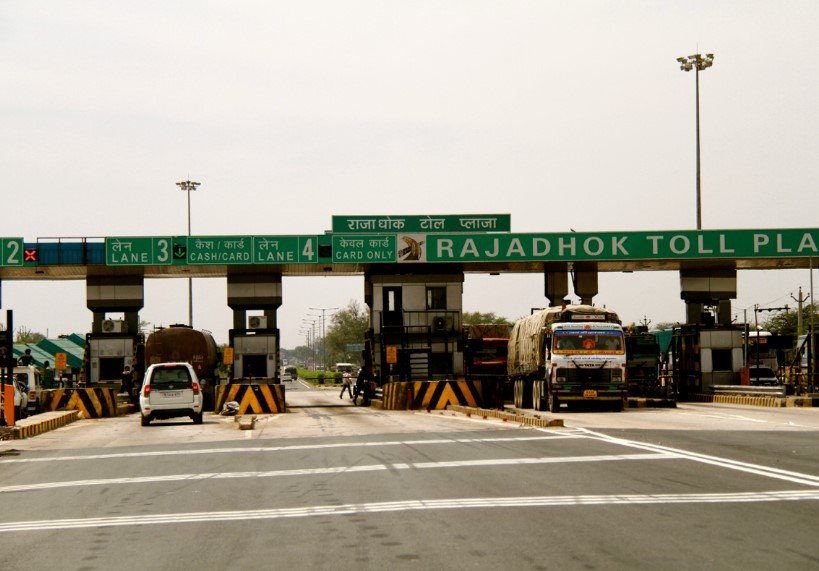With the August 15 launch of the ‘One Nation, One Toll’ annual pass, the Indian government is preparing to soften the blow for private highway operators and global pension fund investors fearing a toll revenue crunch.
The National Highways Authority of India (NHAI) is setting up a compensation plan to protect investors after announcing a uniform, all-access pass for private vehicles on national highways. This annual pass, set to begin mid-August, has rattled long-term players who pumped billions into Indian road projects, often betting on predictable toll income.
Now, with a flat-rate model about to shake up that formula, the government is stepping in — cautiously, and with an eye on public interest.
Annual Pass Sparks Investor Anxiety, Govt Says “We’ve Got It Covered”
The idea of a pan-India toll pass for personal vehicles has gained traction as a citizen-friendly reform. It promises seamless, fixed-price access across the national expressway network.
Sounds like a win for motorists.
But not everyone’s cheering. Private operators like IRB Infrastructure, Cube Highways, and big-ticket investors such as the Canada Pension Plan Investment Board (CPPIB) and Ontario Teachers’ Pension Plan have reason to be nervous. Many paid massive sums upfront to acquire projects through NHAI’s monetization programs, counting on steady tolls based on detailed traffic projections.
“There are valid concerns, especially from investors under TOT and InvIT models, who paid based on fixed traffic volume and revenue estimates,” a senior road ministry official told TNN.
To soothe those nerves, the ministry is forming a committee — one that will talk to all stakeholders over the next month and draft a compensation mechanism to balance the scales.

Big Money, Big Bets, Big Questions
In recent years, Indian highways have become magnets for global capital. It wasn’t just road-building companies that came knocking — it was also long-horizon investors who prefer predictable income.
Sovereign wealth funds, pension boards, and private equity players poured in money.
-
CPPIB and Ontario Teachers’ Pension Plan together control sizable stakes in Indian highway assets
-
NIIF, India’s quasi-sovereign fund, has multiple deals across the sector
-
Adani Group, IRB Infra, Cube Mobility and others have invested in TOT and InvIT projects
The government’s monetization strategy offered three investment models:
-
Toll-Operate-Transfer (TOT): Investors pay upfront for the right to collect tolls for 20-30 years
-
Infrastructure Investment Trusts (InvITs): Investors get units tied to asset pools and revenues
-
Securitization: Toll revenue streams are packaged into bonds
But with the annual pass set to cap how much personal vehicles contribute, some cash flow projections could go sideways. One executive familiar with a TOT deal joked, “The ink on our model assumptions hasn’t even dried, and we’re recalculating already.”
The Rs 1.2 Lakh Crore Achievement and What’s Next
Despite the new concerns, the NHAI’s record is nothing to scoff at.
According to government data:
| Monetization Mode | Contribution (FY2020-25) | Notable Participants |
|---|---|---|
| TOT | ~Rs 40,000 crore | IRB, Adani, Cube |
| InvITs | ~Rs 50,000 crore | NIIF, CPPIB |
| Securitization | ~Rs 30,000 crore | HDFC, ICICI, others |
Total monetization value: Rs 1.2 lakh crore
Target till FY2025: Rs 1.6 lakh crore
Achievement rate: 71%
In fact, the road sector is considered the crown jewel of India’s national asset monetization pipeline.
One senior NHAI official said, “The annual pass won’t derail our five-year target. The modeling has accounted for behavioural shifts, and commercial traffic, which makes up the bulk of toll income, is excluded anyway.”
Balancing Commuter Relief and Investor Confidence
The annual pass initiative is designed for private vehicles only. It’s being pitched as a move to promote transparency, ease of movement, and cashless tolling for the average Indian.
But there’s a balancing act in play.
Officials insist the rollout date of August 15 will stay firm. “We’ve been planning this for months,” said one transport ministry source. “Yes, some recalibration is needed for investors, but we also can’t delay benefits meant for the public.”
Meanwhile, talks are underway to determine how to compensate affected parties.
One proposal being informally floated is a revenue-neutral model that allows operators to either:
-
Receive a share of annual pass revenue proportionate to their assets
-
Opt for hybrid tolling in corridors with heavy commercial use
-
Get adjusted lease tenures or future auction offsets
These are early-stage discussions, but insiders suggest at least two of these ideas will be baked into the final framework.
Looking Ahead: Still a Green Light for Private Capital?
Despite the momentary discomfort, most analysts don’t see investors backing away.
One Mumbai-based infrastructure fund manager told us, “India’s toll roads are still among the most attractive yield-generating assets in the world. This hiccup — we’ll work through it.”
The key, they say, is predictability. If the compensation policy is clear, consistent, and fairly reflects risks, private capital will stay put.
Still, the next few weeks are critical. The optics matter. And so does how fast the NHAI can come up with a credible framework. Because even in the concrete world of roads and toll booths, trust travels fast — and sometimes, faster than traffic.
Pollution, Public Good, and Political Timing
Let’s not forget the broader climate.
Public discontent over toll hikes, long queues at plazas, and inconsistent tolling policies has been simmering. The new pass system is partly a response to that. A single payment, no surprises, no delays.
And, with general elections not too far off, the Centre is aware of the optics. “People hate toll booths,” said a senior Delhi-based political strategist. “It’s one of those daily irritants that makes the government look out of touch. Fixing it wins you hearts.”
So while billion-dollar funds get their compensation plan, it’s ultimately the common driver who’s likely to be the most visible winner.
